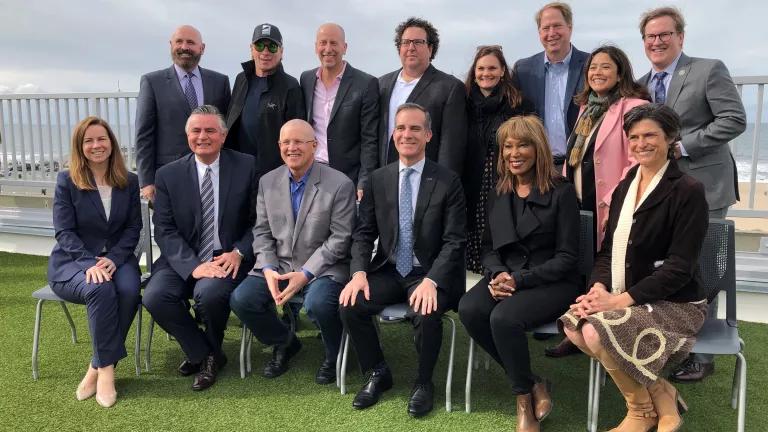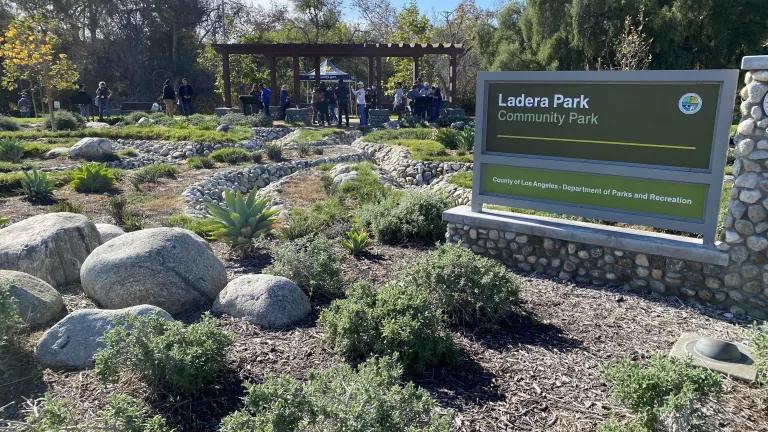City of Los Angeles Announces Bold Recycled Water Plan

Today, the City of Los Angeles announced a bold plan to recycle 100 percent of wastewater currently being discharged to the ocean through the Hyperion Wastewater Treatment Plant by 2035. This is a necessary step to help the City ultimately achieve its local water reliability goals. The plan also provides a path for the rest of California’s coastal areas; showing how city leaders, water and wastewater utilities, environmental organizations, and community groups can work together to develop visionary projects and create more resilient communities.
The City of Los Angeles’ announcement came days after Senators Robert Hertzberg and Scott Weiner introduced SB 332, legislation that aims to reduce wastewater discharge to California’s oceans by 95% by 2040, through a combination of water conservation/efficiency and recycled water. In a state that is proudly home to Silicon Valley and the heart of innovation and disruption, not much has changed in how we manage the supply of our most precious resource: water. California has long been short-sighted in its 20th century thinking that led to stormwater being treated as a waste, rather than a resource. Equally wasteful is our process for obtaining and disposing of drinking water.
We extract drinking water from nature by diverting it from rivers—which negatively impacts the fish and wildlife that rely on healthy ecosystems—or pulling it from groundwater aquifers, too much of which can cause the land to sink. For water to reach many California cities, it is pumped hundreds of miles to its destination, treated for safe drinking, used once and dumped into rivers, bays, or the ocean. Incredibly, more than 400 billion gallons of water are diverted annually from California’s rivers, streams, and groundwater aquifers. That’s equal to one million football fields submerged under a foot of water.
As our climate changes, the traditional water supplies most Californians have depended on are increasingly unreliable. Warming global temperatures are creating weather whiplash here in California, boomeranging our communities between extreme droughts and intense storms. In Southern California, nearly half of our water comes from snowpack in either the Sierra Nevada or Colorado Rockies mountain ranges. As our population and economy continue to grow, it is becoming even more important for communities to stop relying on imported water and start investing in local supplies like stormwater and recycled water, while continuing to advance water conservation and efficiency.
Local water reliability can benefit communities by creating local jobs, improving climate resilience, and protecting water supplies from natural disasters such as earthquakes that can damage the conveyance systems that bring imported water to California cities from hundreds of miles away. Los Angeles is showing the rest of California that the recycling water that is currently discharged to our oceans isn’t just achievable, it’s necessary. As we say here at NRDC, it’s only wastewater if you waste it. To ensure safe, affordable, and reliable water for all, we must invest in sustainable local supplies and maximize the use of every drop. I am proud to support Mayor Garcetti and the City of Los Angeles in leading California toward a more sustainable water future and Senators Hertzberg and Weiner with their bold statewide goals in SB 332.



